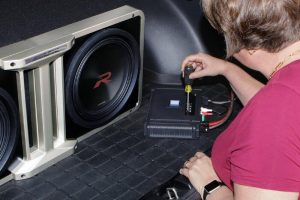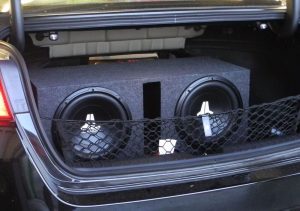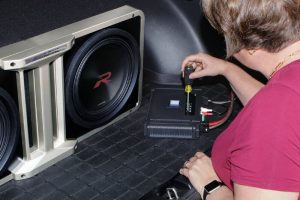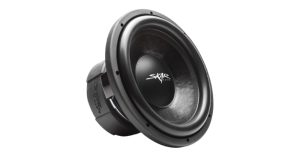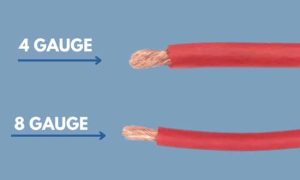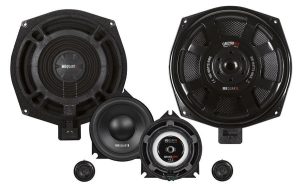A stellar car audio system delivers heart-pounding bass, crystal-clear highs, and an immersive sound experience that transforms every drive. But even the best amplifiers and speakers fall flat without the right power wire. The power wire serves as the lifeline, carrying electricity from your car’s battery to your audio components. Choose the wrong wire, and you risk voltage drops, distorted sound, or even damage to your system. So, what is the best power wire for car audio? This comprehensive guide dives deep into wire types, gauges, materials, and expert tips to help you make an informed choice for a top-notch audio setup.
Contents
- Why Power Wire Matters for Car Audio
- Key Factors to Consider When Choosing Power Wire
- Top Power Wire Brands for Car Audio
- How to Calculate the Right Wire Gauge
- Installation Tips for Power Wire
- Common Mistakes to Avoid
- Power Wire for Different Audio Setups
- Balancing Cost and Performance
- Enhancing Your Audio System Beyond Power Wire
- Conclusion: Power Up Your Car Audio with the Right Wire
Why Power Wire Matters for Car Audio
Power wire plays a critical role in your car audio system. It delivers the electrical current needed to drive your amplifiers, ensuring they perform at their peak. A high-quality power wire minimizes voltage loss, reduces heat buildup, and prevents performance issues like clipping or distortion. On the flip side, a subpar wire can choke your system, leading to poor sound quality or even safety hazards like short circuits.
Think of power wire as the highway for your audio system’s electricity. A wide, well-paved road allows traffic to flow smoothly, while a narrow, pothole-filled path causes delays and breakdowns. By selecting the right power wire, you ensure your system runs efficiently, delivering the sound quality you crave.
Key Factors to Consider When Choosing Power Wire
Selecting the best power wire involves balancing several factors, including gauge, material, length, and installation needs. Let’s break down each one to guide your decision.
1. Wire Gauge: Size Matters
Wire gauge, measured using the American Wire Gauge (AWG) standard, determines how much current a wire can carry. The lower the gauge number, the thicker the wire, and the more current it can handle. For car audio, common gauges range from 8 AWG to 1/0 AWG (zero gauge).
- 8 AWG: Ideal for low-to-moderate power systems (up to 500 watts RMS). Perfect for compact setups or budget-conscious installs.
- 4 AWG: Suited for mid-range systems (500–1000 watts RMS). A popular choice for most car audio enthusiasts.
- 2 AWG or 1/0 AWG: Designed for high-power systems (1000+ watts RMS). Essential for audiophiles with multiple amplifiers or powerful subwoofers.
To choose the right gauge, consider your amplifier’s power output and the distance between the battery and the amp. Longer runs increase resistance, so thicker wires are often necessary to maintain performance. For example, a 15-foot run for a 1000-watt system typically requires 4 AWG to avoid voltage drops.
2. Wire Material: OFC vs. CCA
The material of the power wire directly impacts its conductivity and durability. Two primary options dominate the market: Oxygen-Free Copper (OFC) and Copper-Clad Aluminum (CCA).
- Oxygen-Free Copper (OFC): Known for superior conductivity, OFC wires deliver maximum current with minimal resistance. They resist corrosion better, making them ideal for long-term use, especially in harsh environments like salty winter roads. However, OFC wires come with a higher price tag.
- Copper-Clad Aluminum (CCA): CCA wires feature an aluminum core coated with a thin layer of copper. They’re lighter and more affordable than OFC but less conductive, requiring a thicker gauge to achieve the same performance. CCA is prone to corrosion in humid or salty conditions, which can lead to failures over time.
For the best performance, OFC is the gold standard. If budget constraints push you toward CCA, opt for a thicker gauge to compensate for its lower conductivity. For instance, a 4 AWG CCA wire may perform similarly to a 6 AWG OFC wire.
3. Wire Length: Plan for Efficiency
The length of the power wire affects both performance and installation. Longer wires increase resistance, which can reduce the voltage reaching your amplifier. To counter this, use a thicker gauge for longer runs. For example, a 20-foot run for a 1000-watt system might require 2 AWG instead of 4 AWG to minimize voltage loss.
Measure the path from your battery to the amplifier, accounting for curves, bends, and obstacles like seats or panels. Always add a little extra length to avoid coming up short during installation. A good rule of thumb: overestimate by 10–15% to ensure flexibility.
4. Strand Count: Flexibility and Durability
Power wires consist of multiple strands of conductor material bundled together. A higher strand count increases flexibility, making the wire easier to route through tight spaces in your vehicle. It also improves durability, as finer strands are less likely to break under vibration or stress.
High-quality wires, like those from KnuKonceptz or Kicker, often boast thousands of fine strands, offering excellent flexibility without sacrificing conductivity. Avoid wires with low strand counts, as they’re stiffer and more prone to damage in mobile environments.
5. Insulation and Jacketing: Protection Against the Elements
The outer jacket of a power wire protects it from heat, chemicals, and abrasion. Look for wires with durable, flexible jackets made from materials like PVC or silicone. These materials resist oil, battery acid, and extreme temperatures, ensuring longevity in the engine compartment or trunk.
For added safety, cover power wires in protective looms, especially in the engine bay, and use rubber or plastic grommets when passing through metal surfaces. This prevents chafing and reduces the risk of short circuits.
Top Power Wire Brands for Car Audio
Several brands stand out for their quality and reliability in the car audio world. Here are some top picks based on performance, durability, and user feedback.
- KnuKonceptz: Renowned for affordable OFC wires, KnuKonceptz offers options like the Kolossus Fleks with high strand counts for flexibility. Their 1/0 AWG cables are a favorite for high-power systems.
- Kicker: A trusted name in car audio, Kicker provides OFC power wires with robust insulation. Their 4 AWG kits are ideal for mid-range setups, balancing cost and performance.
- Rockford Fosgate: Known for premium audio components, Rockford Fosgate’s power wires deliver excellent conductivity and durability. Their 4 AWG and 1/0 AWG options suit a wide range of systems.
- InstallGear: Popular for budget-friendly CCA wires, InstallGear offers reliable performance for moderate systems. Their 4 AWG kits include extras like lugs and heat-shrink tubing for easy installation.
When shopping, check user reviews on platforms like Amazon or car audio forums to ensure the brand meets your needs. Avoid generic or unbranded wires, as they often skimp on quality, leading to performance issues.
How to Calculate the Right Wire Gauge
Choosing the correct wire gauge requires a bit of math, but it’s straightforward. Follow these steps to estimate your needs:
- Determine Your System’s Current Draw: Add up the fuse ratings of all amplifiers in your system. For example, two amps with 40A and 30A fuses require a wire capable of handling 70A. Alternatively, use the formula:
Current (Amps) = Amplifier Power (Watts) / Voltage (12V).
For a 1000-watt amp, this is roughly 83A (1000 ÷ 12). - Measure the Wire Length: Calculate the distance from the battery to the amplifier, including both power and ground wires (the “round trip”). For a 15-foot run, you’d account for 30 feet total.
- Consult a Wire Gauge Chart: Use a chart like the one from JL Audio to match your current draw and wire length to the appropriate gauge. For instance, a 70A system over 15 feet typically requires 4 AWG.
- Factor in Efficiency: If using CCA, go one gauge thicker to account for its lower conductivity. For example, use 2 AWG CCA instead of 4 AWG OFC for the same load.
Online calculators, like those on car audio websites, can simplify this process. Plug in your amp’s power rating and wire length to get a quick recommendation.
Installation Tips for Power Wire
Proper installation ensures your power wire performs optimally and safely. Here are some expert tips to guide you:
- Use a Fuse Near the Battery: Install an inline fuse (e.g., ANL or AGU) within 6–12 inches of the battery to protect your system from short circuits. Match the fuse size to your wire’s current capacity.
- Ground Properly: Run the ground wire directly to the battery’s negative terminal or a solid, unpainted metal surface. Avoid grounding to the chassis in high-current systems, as it can introduce noise.
- Secure the Wire: Use zip ties or clamps to keep the wire in place, preventing it from rubbing against sharp edges or moving parts.
- Test Before Finalizing: After installation, check the voltage at the amplifier with a multimeter. A reading close to 12–14.4V indicates minimal loss.
If you’re new to car audio, consider hiring a professional installer to avoid costly mistakes. A clean, secure setup maximizes performance and longevity.
Common Mistakes to Avoid
Even seasoned enthusiasts can make errors when choosing or installing power wire. Steer clear of these pitfalls:
- Using Undersized Wire: A wire too thin for your system causes voltage drops, overheating, and distortion. Always match the gauge to your amp’s power needs.
- Opting for Cheap CCA: While budget-friendly, low-quality CCA wires corrode quickly and underperform. Invest in reputable brands for reliability.
- Ignoring Grounding: A poor ground connection introduces noise and reduces efficiency. Ensure a solid, corrosion-free ground point.
- Skipping Protection: Failing to use looms, grommets, or fuses increases the risk of damage or fire. Safety first!
By planning carefully and choosing quality materials, you’ll avoid these issues and enjoy a flawless audio experience.
Power Wire for Different Audio Setups
Your power wire needs vary based on your audio system’s complexity. Here’s a quick guide for different setups:
- Basic Setup (100–500 watts): An 8 AWG OFC or CCA wire works well for a single amp powering coaxial speakers. Keep runs short to minimize resistance.
- Mid-Range Setup (500–1000 watts): A 4 AWG OFC wire is ideal for a single amp driving component speakers and a subwoofer. Use CCA only if budget is tight.
- High-Power Setup (1000+ watts): Go for 2 AWG or 1/0 AWG OFC for multiple amps or large subwoofers. Long runs may require even thicker wire.
- Competition Systems: Extreme setups with 2000+ watts demand 1/0 AWG or larger OFC wires, often with upgraded alternators and batteries to handle the load.
Tailor your wire choice to your system’s power demands and vehicle size for optimal results.
Balancing Cost and Performance
High-quality power wire can be pricey, but it’s a worthwhile investment for sound quality and safety. OFC wires from brands like KnuKonceptz or Rockford Fosgate often cost $2–$5 per foot, while CCA options from InstallGear or DS18 run closer to $1–$2 per foot. For a 20-foot run, expect to spend $40–$100 on OFC or $20–$50 on CCA.
To save money without sacrificing performance, consider these tips:
- Buy in Bulk: Purchasing a roll of wire (e.g., 50 feet) often costs less per foot than buying pre-cut lengths.
- Shop Sales: Check Amazon, eBay, or car audio retailers for discounts on trusted brands.
- Mix Materials: Use OFC for the power wire and CCA for less critical ground or speaker wires to balance cost and quality.
Prioritize quality over the cheapest option to avoid headaches down the road.
Enhancing Your Audio System Beyond Power Wire
While power wire is crucial, other components also impact your car audio performance. To maximize your system, consider:
- High-Sensitivity Subwoofers: These deliver powerful bass with less power, easing the load on your wire and amp.
- Quality Speaker Wire: Use 16–12 AWG OFC speaker wire to ensure clear signal transmission to your speakers.
- Proper Grounding: A solid ground connection reduces noise and improves efficiency.
- Capacitors or Batteries: For high-power systems, add a capacitor or secondary battery to stabilize voltage and prevent dimming headlights.
A well-rounded approach to your audio setup ensures every component works in harmony for the best sound possible.
Conclusion: Power Up Your Car Audio with the Right Wire
Choosing the best power wire for car audio boils down to understanding your system’s needs and prioritizing quality. Opt for OFC wires for maximum conductivity and durability, or choose CCA for budget-friendly setups with thicker gauges. Match the wire gauge to your amplifier’s power output and run length, and invest in reputable brands like KnuKonceptz, Kicker, or Rockford Fosgate. Proper installation, including fuses, looms, and secure grounding, seals the deal for a safe and high-performing system.
By selecting the right power wire, you unlock the full potential of your car audio system, turning every drive into a concert on wheels. Ready to upgrade? Measure your setup, pick a quality wire, and crank up the volume for an unforgettable audio experience.

